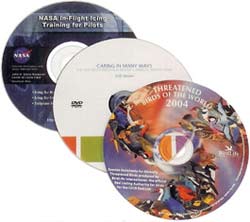Witnessing the rise of new-generation DVD technology, many wonder: What happens to the current DVD format when it still offers beautiful images, vibrant sound, a rich catalog of films, and reasonable prices? The New York Times has provided an analysis on this issue.
 |
|
Source: Redbows |
“When did you start doubting technology? When the VHS format became obsolete and you had to repurchase all your films on DVD? Or when the 3-month warranty just expired, and two days later, the device started showing signs of malfunction?
Last month, Toshiba’s HD-A1 high-definition DVD player hit the shelves. This marked the first volley in the “pointless war” between giants in the film, electronics, and computing industries. Currently, 82% of American households own at least one DVD player. Yet, electronics experts claim: it’s time to toss them in the trash and start over. In reality, that statement was missing the first part: “Because the traditional DVD player market is saturated…” and discussions shifted to image quality.
Unfortunately, the concept of sharp, high-definition DVD technology with large storage capacity was conceived simultaneously by Sony and Toshiba. Each dreamed that their format would become the standard technology. They established a formidable army of partners. Toshiba’s format, called HD DVD, attracted support from Microsoft, Sanyo, NEC, and film studios like New Line and Universal. Meanwhile, Sony’s backed technology, known as Blu-ray, garnered support from Apple, Philips, Sharp, Panasonic, Samsung, Pioneer, Dell, alongside Sony Pictures, 20th Century Fox, and Disney. Meanwhile, HP, LG, Warner Brothers, and Paramount announced they would produce products supporting both formats.
Initially, observers predicted Blu-ray would win due to its strong backing from numerous film production studios, its higher capacity compared to HD DVD, and the PlayStation 3 gaming device, which also functions as a Blu-ray player, likely becoming a top-selling item next fall.
However, Toshiba also held at least two powerful cards. First, their HD DVD player was already on the market while the Blu-ray product had to wait until June. Second, the HD-A1 was priced at just $500, significantly less than a Blu-ray device.
However, despite its advantages over the competition, HD DVD still has many drawbacks. The HD-A1 is relatively bulky, measuring 45 x 11 cm, resembling an early VCR more than a modern DVD device.
Moreover, $500 is not the only price one has to pay to be among the first to support the new technology. This “immature” product takes over a minute to start up, the menu button sometimes responds sluggishly, and after inserting a DVD, users must wait 45 seconds before the FBI warning screen appears. The remote control is designed identically, with an illogical layout and faded text.
Additionally, high-definition televisions (HDTV) are produced according to standards of 720p (1280 x 720 pixels), 1080i (1920 x 1080 pixels), and 1080p (1920 x 1080 pixels). However, Toshiba’s player does not display images in 1080p – which is regarded as the resolution standard for the future.
Three reasons not to buy new-generation DVD products just yet:
Reason 1: An ordinary person may struggle to notice the difference in image quality between traditional DVDs and new-generation DVDs unless displayed on a large high-resolution screen. The advancement is not truly revolutionary like the transition from VHS to DVD.
Reason 2: While the HD-A1 is affordably priced, it has too many shortcomings. Furthermore, there are currently only 20 HD DVD-compatible films (priced between $20 – $40) and a few hundred films by the end of the year (while traditional DVD films number in the tens of thousands).
Reason 3: People are betting a large sum of money on an erratic horse.
In general, consumers should wait until prices drop, the number of films increases, and one of the two formats has genuinely gained dominance, to avoid being sidelined after making a significant investment in new purchases.”
T.N.


















































